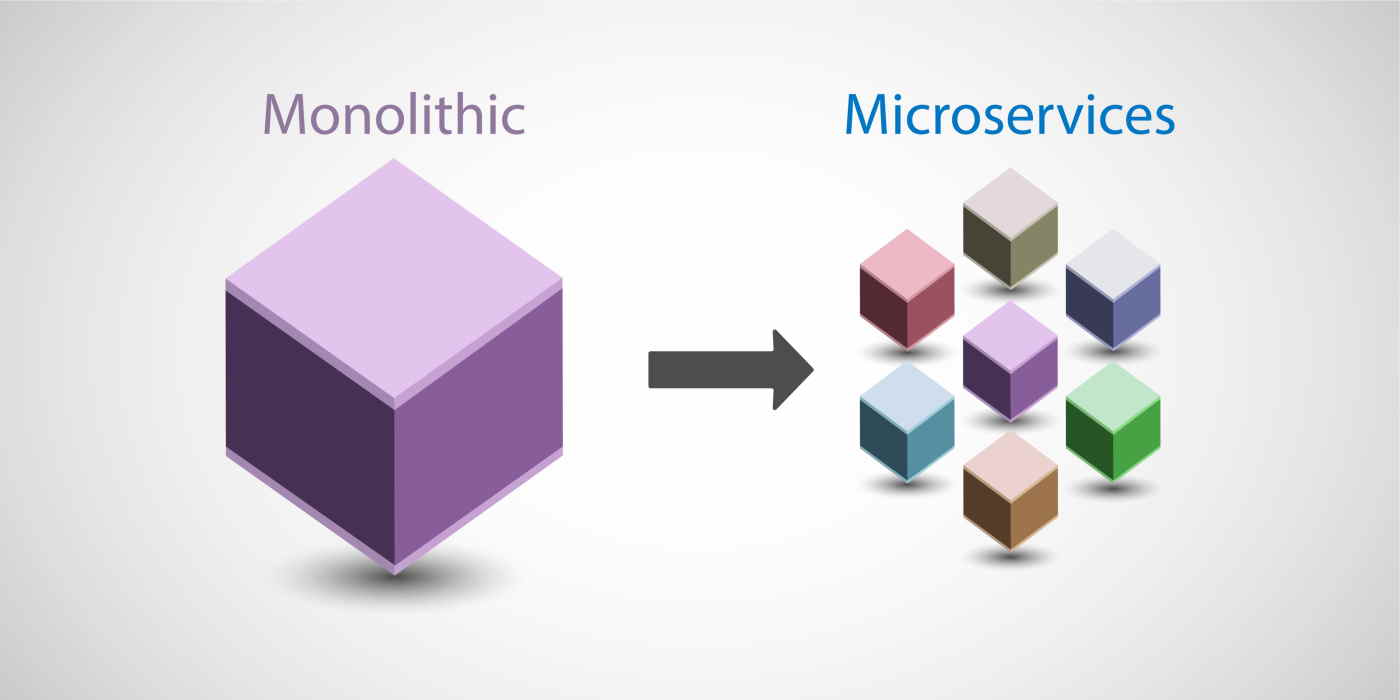Software Architecture Microservices vs Monolithic
 Emmanuel Obinna chukwukere
Emmanuel Obinna chukwukere
Building large-scale enterprise applications requires careful consideration of the underlying architecture. Two prominent approaches dominate the landscape: monolithic and microservices. Understanding their nuances, evolutions, advantages, disadvantages, and applicability is crucial for making informed decisions.
As software caters to diverse user groups with distinct needs and evolving requirements, delivering features and data in varied formats becomes imperative. User preferences constantly evolve, prompting a necessary evolution of software solutions. This dynamic landscape challenges the selection of an appropriate architecture.
Recent trends in the tech industry showcase a shift from monolithic architectures to microservices among major players. Delving into both approaches will shed light on the ongoing debate surrounding their suitability.
Monolithic Architecture

Imagine a single, large building housing all functionalities of your application. That's the essence of a monolithic architecture. The codebase is unified, tightly coupled, and deployed as a single unit.
Evolution
Monoliths were the de facto standard for decades, offering simplicity and ease of development. However, their growth presented challenges:
Scalability: Scaling the entire application for specific functionalities becomes inefficient.
Maintenance: Updating or debugging becomes cumbersome due to codebase dependencies.
Agility: Responding to changing requirements or integrating new technologies is often slow.
Rationales:
Despite their limitations, monoliths excel in several areas:
Simplicity: Initial development and deployment are straightforward.
Performance: Tight coupling can optimize performance in some scenarios.
Data Consistency: Maintaining data integrity across the application is easier.
Advantages:
Faster development and deployment: Initial development is quicker due to the simpler structure and tighter coupling.
Simpler data management: Data consistency is easier to maintain as all data resides within the same codebase.
Easier debugging: Troubleshooting issues is straightforward due to the unified codebase.
Disadvantages:
Scalability bottlenecks: Scaling individual functionalities becomes difficult and expensive.
Maintenance challenges: Fixing or updating one module can require redeploying the entire application.
Limited agility: Adding new features or adapting to changing technologies can be time-consuming.
Microservices Architecture

Think of microservices as a bustling city center, where independent shops (services) collaborate to serve customers (users). Each service is independently developed, deployed, and scaled, facilitating agility and resilience.
Evolution:
Microservices emerged as a response to the monolithic limitations. They offered:
Increased Scalability: Individual services can be scaled independently based on demand.
Improved Agility: Development and deployment of new features are faster and isolated.
Enhanced Fault Tolerance: Service failures are contained, preventing cascading outages.
Rationales:
Microservices shine in situations where:
Scalability and agility are critical.
Continuous innovation and feature updates are required.
Technology adoption needs flexibility.
Advantages:
Highly scalable: Individual services can be scaled independently to meet specific demands.
Agile development and deployment: New features and functionalities can be added quickly.
Fault tolerance: Individual service failures are isolated, minimizing overall application impact.
Technology independence: Different services can utilize different technologies without affecting others.
Disadvantages:
Increased complexity: Managing and orchestrating multiple services adds complexity.
Data consistency challenges: Maintaining data integrity across independent services requires careful planning.
Higher operational overhead: Monitoring and troubleshooting distributed services can be challenging.
Know Which Architecture for Your Business?
The choice between monolithic and microservices depends on several factors:
Application size and complexity: Smaller applications might benefit from a monolithic approach for initial development.
Scalability requirements: If future scalability is crucial, microservices offer better flexibility.
Team structure and skills: Microservices require distributed development and operational expertise.
Budget and resources: Implementing and maintaining microservices typically require more resources.
Business Competitor Advantage
Both architectures offer potential advantages over competitors:
Monoliths: Faster time to market, simpler data management, potentially better performance.
Microservices: Faster innovation, higher scalability, improved fault tolerance, easier technology adoption.
Ultimately, the optimal choice depends on your specific business needs and goals. Understanding the strengths and limitations of each architecture empowers you to make informed decisions and leverage their potential for a competitive edge.
Note: This is a comprehensive overview. Additional factors and nuanced considerations exist in real-world scenarios. Further research and professional consultation are recommended for specific projects.
Subscribe to my newsletter
Read articles from Emmanuel Obinna chukwukere directly inside your inbox. Subscribe to the newsletter, and don't miss out.
Written by

Emmanuel Obinna chukwukere
Emmanuel Obinna chukwukere
👋 Hello, I'm Emmanuel Chukwukere Obinna, a passionate Frontend Engineer based in Lagos, Nigeria. 🌐 With a heart deeply rooted in technology, I find immense joy in sharing my insights and experiences through my tech blog. I believe that the power of technology extends far beyond coding and development; it can reshape economies, empower small businesses, and transform nations. 🏫 I'm a firm advocate for introducing tech early in education because I've witnessed firsthand how it can inspire innovation and open doors to boundless opportunities for young minds. 💼 As a Software engineer, I've had the privilege of working on various projects that span the tech landscape, from web development to exploring the latest trends in tech. I'm passionate about comparing different technologies to find the best solutions that drive profitability and efficiency. 📈 Join me on this journey as we delve into the world of tech, exploring how it can be a profitable force in early education, a catalyst for transforming a nation's GDP, and a lifeline for SMEs and micro-businesses looking to thrive in the digital age. ✉️ Feel free to reach out to me at Chuksobinna80@gmail.com)for collaborations, discussions, or just to say hello. Let's connect and explore the limitless possibilities that technology offers.